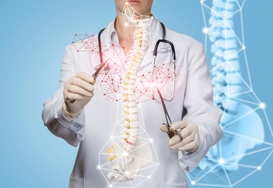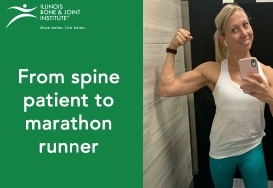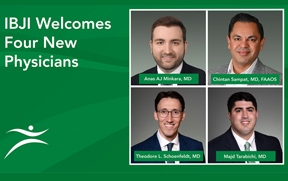Signs & Symptoms
Over 7 million people in the United States are affected by scoliosis, which is actually a descriptive term , not an actual disease. Scoliosis describes a curvature of the spine sometimes appearing to look like an S when viewed in an xray. This curvature can lead to a great deal of pain because of the added strain it places on the muscles in the back and the pressure placed on the other joints and bones in the body. The symptoms of scoliosis are varied but can include uneven muscles on tone side of the spine, hips being uneven lengths, a rib or shoulder blade that sticks out, and nerves responding slowly.
How Scoliosis Is Caused
Most usually the causes of scoliosis are unknown, or idiopathic, but are classified by doctors based on the age of the patient. Though the cause is not always obvious, most physicians believe that idiopathic scoliosis in children is caused by genetics. Occasionally scoliosis is present at birth due to a congenital birth defect to the vertebrae. In even fewer cases this spinal condition is seen as secondary to another diseases, condition, and illness. Some of the conditions that are commonly seen with scoliosis are:
- Connective tissue disorders
- Spina Bifida
- Amniotic Band Syndrome
- Muscular Dystrophy
- and many others
Potential Treatment and Management Options
There are many treatment options that a physician may choose to use when treating scoliosis. The treatment path will depend on many factors including severity, causes, and age of the patient. The potential treatments include physical and occupational therapy, bracing, surgery, and more.
Typically a physician will start with either physical therapy or occupational therapy. Both of these are non invasive and preferable to more extreme options. Using physical therapy to treat scoliosis has been used for decades to improve the severity of the curvature. Occupational therapy is designed to help scoliosis patients lead a more normal, physically active life but not always to correct the scoliosis.
Bracing can be more uncomfortable but is designed to limit any further curving of the spine. In some cases the brace is worn all day, including while sleeping. The braces themselves have many different designs, but all cover the entire torso from hip to shoulders.
Surgery is typically only used in the worst and most severe cases that interfere with sitting and normal functions, like breathing. Fusion surgery, either anterior or posterior is the most common surgical option used to treat scoliosis. There are many different fusion techniques an orthopedic surgeon can use but all involve the use of screws and rods.
Finding The Right Scoliosis Care
Choosing a medical professional to treat scoliosis can be difficult. In many cases you may only be able to find someone who is able to treat one aspect of the disorder. That is why going to a group, like the Illinois one and Joint Institute is so important. IBJI can offer you access to all forms of treatment and professionals. We not only give you access to your physician but to a physical therapist, complete diagnostic imaging, and psychological assistance we offer a holistic treatment package. Schedule online with one of our orthopedic physicians today to start making use of our complete scoliosis medical treatment.
*This content is for information only and is not intended to replace the diagnosis, treatment, or medical advice from your treating healthcare professionals. The content does not provide medical advice, does not constitute the practice of medicine or other healthcare professional services, and does not create a doctor-patient relationship. You should not rely on this information as a substitute, nor does it replace professional medical advice, diagnosis, or treatment. If you have concerns or questions, seek the advice of your healthcare professionals. If you think you may have a medical emergency, call your doctor or 911 immediately. Do not rely on electronic communications or communicate through this website for immediate, urgent medical needs. This website is not designed to facilitate medical emergencies. The use of the information is at the reader’s own risk. The links are provided for information and convenience only. We cannot accept responsibility for the sites linked or the information found here. A link does not imply an endorsement of a site.




